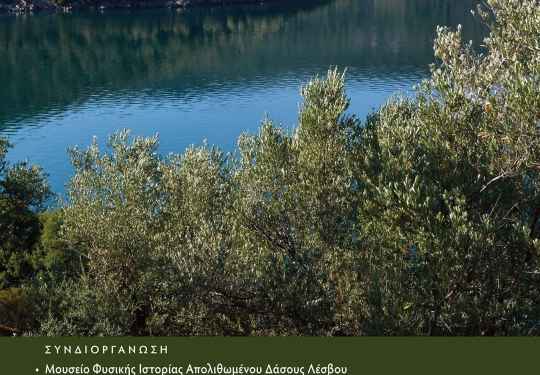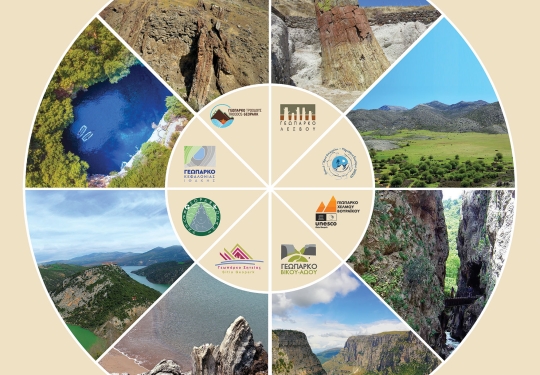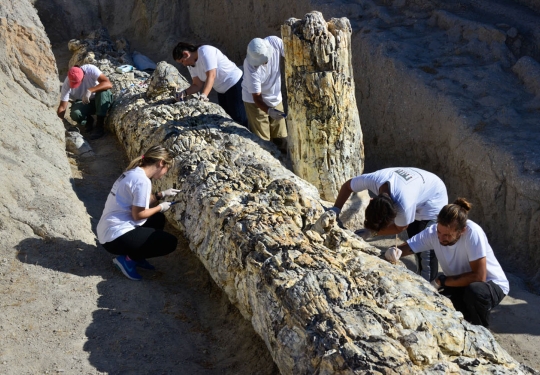Exhibition of the Lesvos Petrified Forest
Unique fossils from the collection of the plant and animal fossils that were discovered during the research in Western Lesvos.
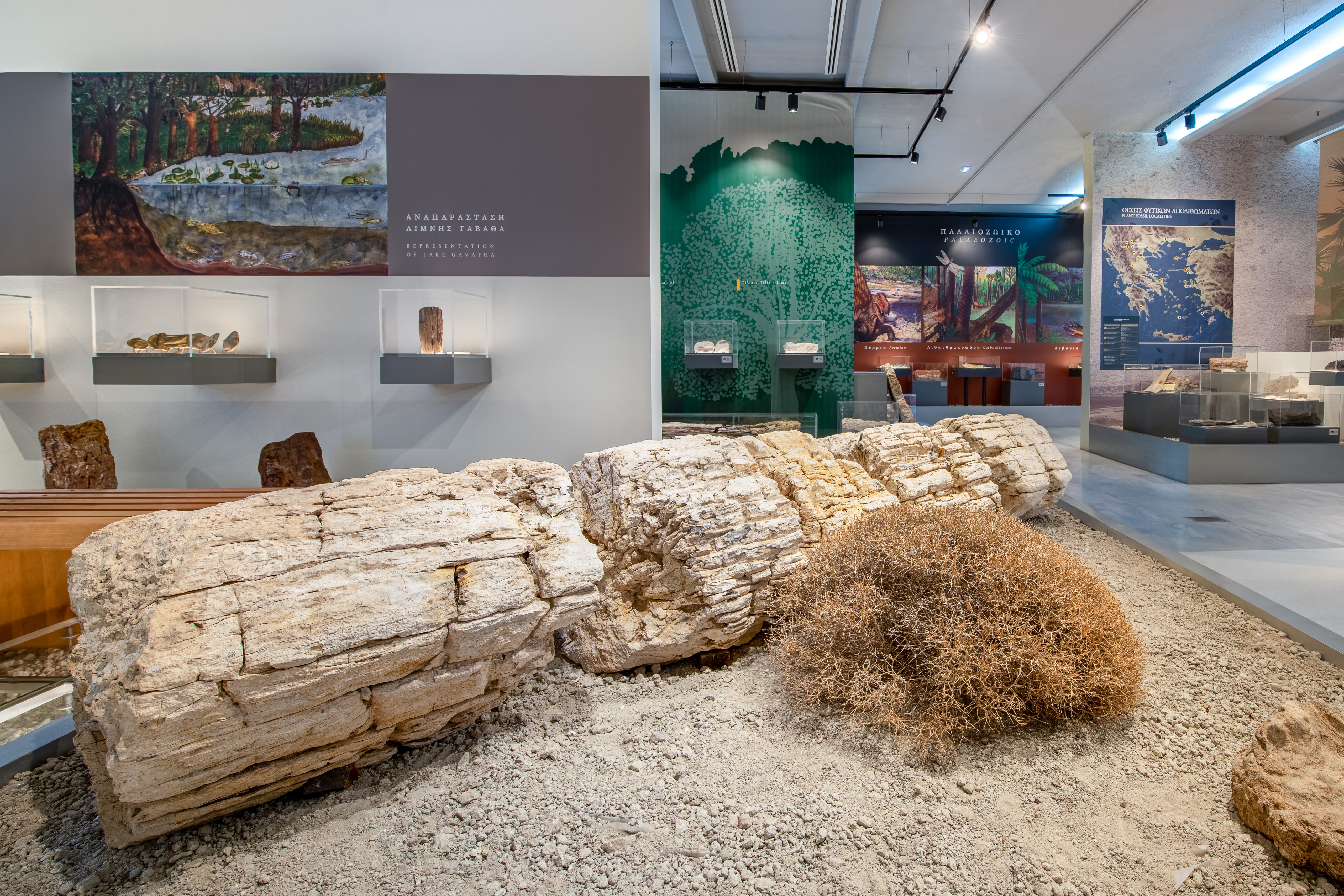
Exhibition Photos
Exhibition SECTIONS
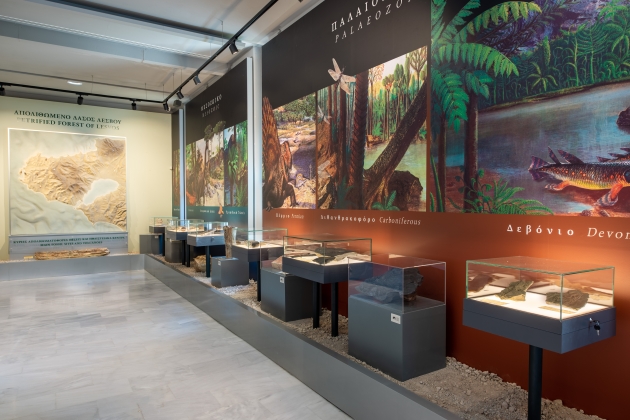
The evolution of life on earth
The evolution of life on earth, from the first unicellar organisms that appeared on our planet, 3.5 billion years ago up to modern ecosystems, is presented through reconstructions of the paleo-enviroments and characteristic fossils, many of which come from areas recognized as UNESCO Global Geoparks.
Important exhibits are on display such as:
the iron meteorite - which refers to the period of our planet’s formation
stromatolites - rocks created by the first unicellular organisms
trilobites - primitive multicellular organisms that lived in the ancient seas long before the appearance of the first land plants
shrubs and calamites - primitive plants that formed dense forests during the Carboniferous period
the first trees that appeared on earth
characteristic fossils from the fossilized forests of Arizona, Yanqing - Beijing, Antarctica and Argentina
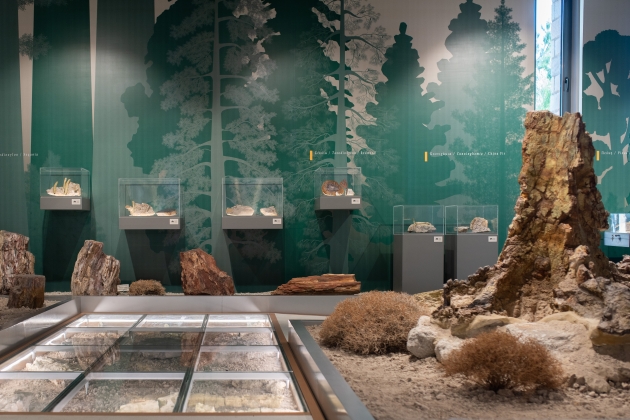
The plants of the Lesvos Petrified Forest
The display of the plants of the Lesvos Petrified Forest includes fascinating fossil remains of over 40 different species of conifers, angiosperms or pteridophytes. Among the exhibits there are petrified trunks, branches, twigs, impressive leaf imprints, fruits and parts of tree roots.
There are also large graphic depictions of the vegetation of the Petrified Forest 20 million years ago. Palms, cinnamon trees, many species of laurel, lime, beech, yew, oak, walnut, alder, blackberry, hornbeam, pines and protopinaceae, thuja, cypress, cunninghamia and giant sequoia are some of the species presented in this exhibition.
The Sequoia Diorama depicts the modern sequoia trees from California, the fossils of ancestral sequoias of the Lesvos Petrified Forest and modern sequoia trunks, so that visitors are transported back in time to the subtropic forest which covered Lesvos 20 million years ago.
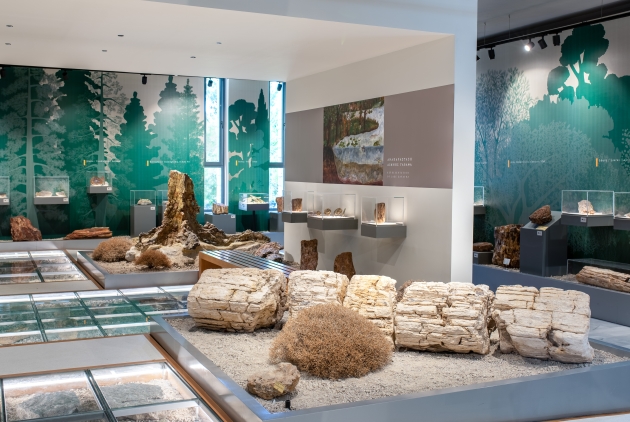
The Marine Petrified Forest
The sea area west of Lesvos, which includes the islet of Nissiopi, was part of the landmass Aegiis 20 million years ago. The subtropical forest extended to this area, where today many fossils of tree trunks and parts of twigs and roots are found below the sea surface. This section presents fossils that were pulled up out of the depths of the sea and after their careful cleaning of salts and marine organisms and their conservation, they were put on display.
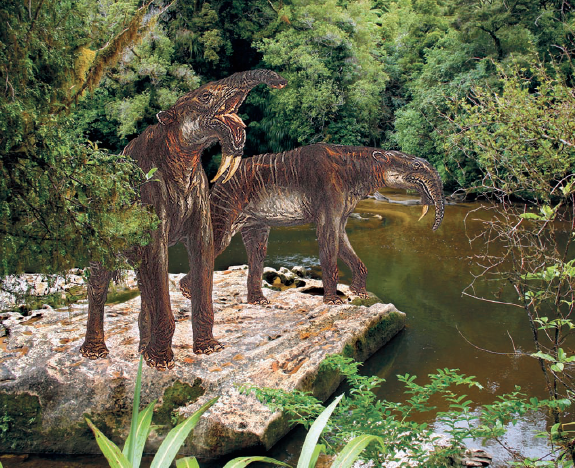
The animals of the Lesvos Petrified Forest
Fossils of animals that lived in the area of the Petrified Forest are presented. Inside a specially constructed display case is exhibited the lower jaw that belongs to a prehistoric form of a trunked animal (proboscidean) from the area of Gavathas.
It has been identified as Prodeinotherium, Prodeinotherium bavaricum. The fossil found in Gavathas is one of the oldest vertebrate fossils in Greece and comes from one of the first proboscideans to migrate from Africa to Europe. In the display case, apart from the fossilized lower jaw of the animal, there is also the part of the rock in which it was found, which preserves the imprints of the jaw teeth, as well as parts of the bones that connected the lower jaw with the animal's skull.
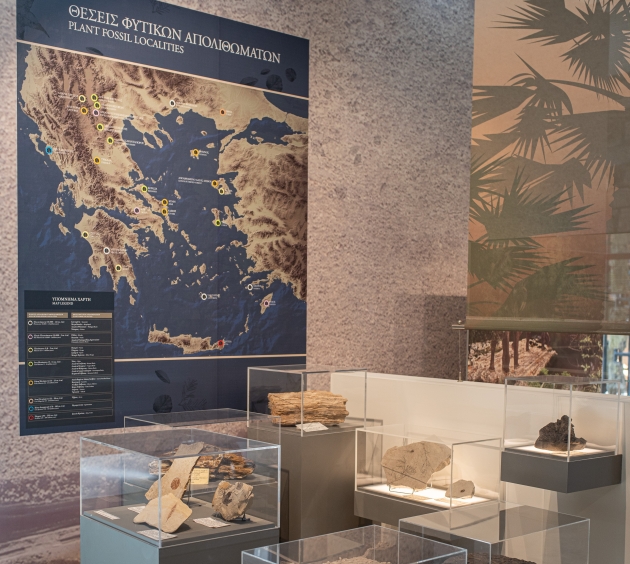
Fossilized plants of Greece
The section includes representative plant fossils of different geological eras from various fossil-bearing sites in Greece. Impressive fossils of leaves, fruits and wood from the regions of Evros, Lemnos, Kymi and Aliveri, Evia, Vegora, Elassona and Santorini are on display. These fossils show the evolution of plants and climate change in Greece over the last 20 million years. Impressive are the findings from Santorini: in volcanic ash from the eruption of the volcano of Santorini about 50-60,000 years ago, have been preserved in every detail imprints of palm leaves, but also olive leaves which are among the most rare finds from the Mediterranean region.
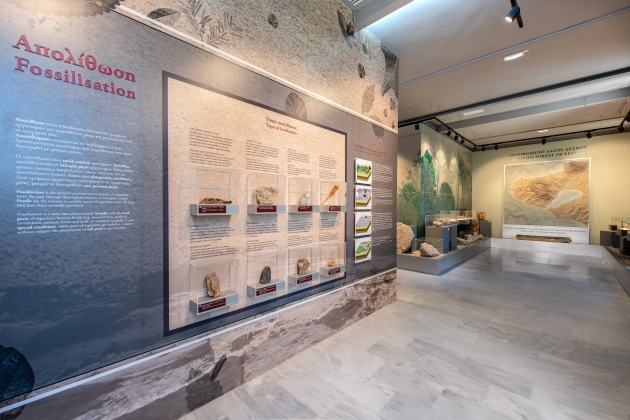
The process of fossilization
The section is dedicated to the process of conservation of organisms, fossilization, a process which is directly related to the creation of the Petrified Forest of Lesvos. First one encounters the image of Medusa with wild eyes and snakes instead of hair. Medusa, according to Greek Mythology, had the power with her gaze to petrify any living creature that looked into her eyes.
In the display cases impressive fossils are exhibited, which represent the different types of fossilization, such as the preservation of the initial material, the recrystallization, the imprinting, the preservation of the soft tissues, the permineralisation, the carbonization, the trace preservation, the precipitation of calcite. The section concludes with a presentation of the stages of the creation of the Lesvow Petrified Forest, a typical example of the replacement of organic carbon compounds in the structure of wood by silicon dioxide.
Other Exhibitions


















